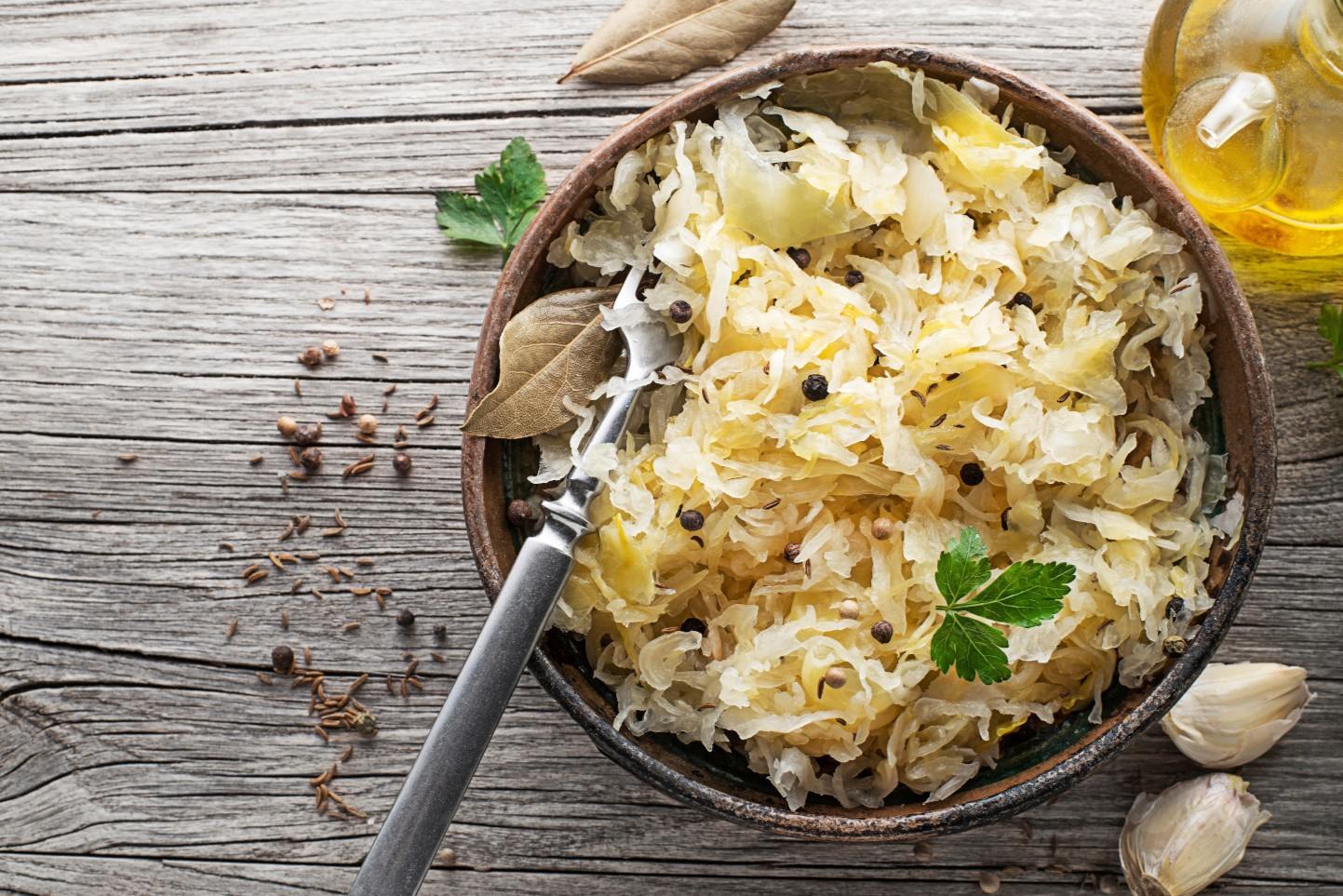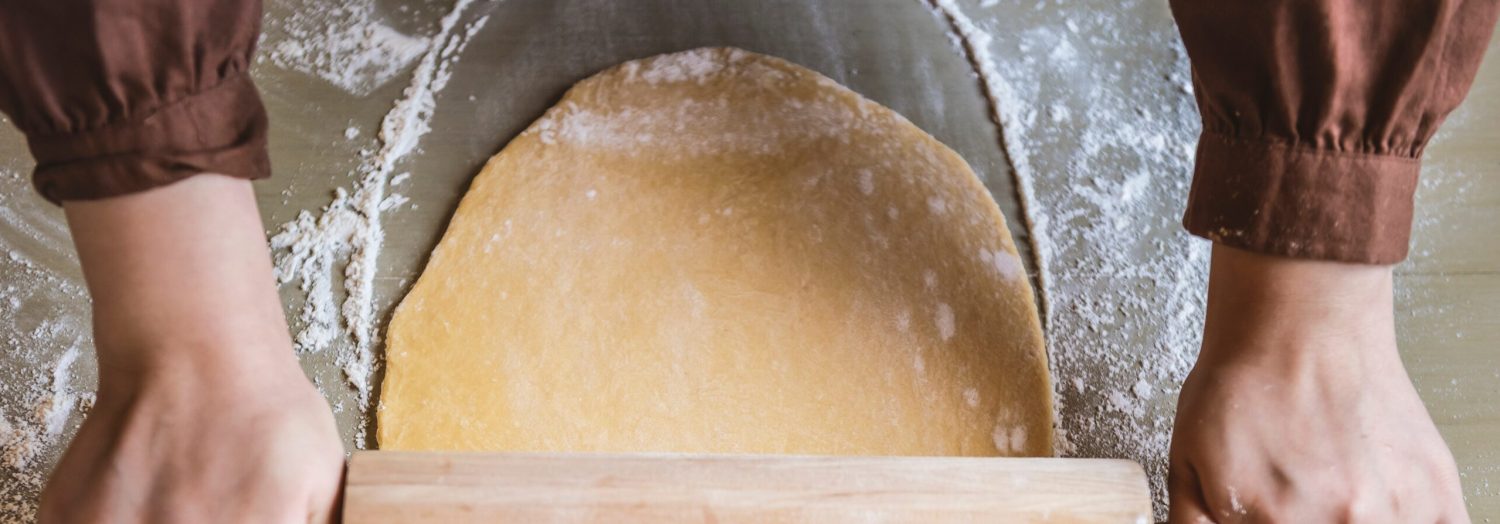Creating sauerkraut at home is a simple and rewarding process. This tangy, fermented cabbage dish is not only delicious but also packed with probiotics that are great for your gut health. With just two basic ingredients and a bit of patience, you can enjoy this traditional delicacy in your own kitchen.
The ingredients for this sauerkraut recipe are quite basic. You will need a head of cabbage and some salt. These items are commonly found in most supermarkets. When selecting cabbage, look for a fresh, firm head with tightly packed leaves. Any type of salt will work, but non-iodized salt is preferred for fermentation.

Ingredients For Sauerkraut Recipe
Cabbage: The main ingredient, providing the bulk and texture of the sauerkraut. Choose a fresh, firm head with tightly packed leaves.
Salt: Essential for the fermentation process, it helps to draw out moisture from the cabbage and create an environment where beneficial bacteria can thrive. Non-iodized salt is preferred.
Technique Tip for This Recipe
When massaging the cabbage with salt, make sure to do it thoroughly for at least 5-10 minutes. This process helps to break down the cell walls of the cabbage and releases more liquid, which is crucial for proper fermentation. The brine created from the cabbage's own juices will ensure that the sauerkraut ferments evenly and develops a rich, tangy flavor.
Suggested Side Dishes
Alternative Ingredients
shredded cabbage - Substitute with shredded Brussels sprouts: Brussels sprouts have a similar texture and slightly bitter taste that can mimic the flavor profile of cabbage in sauerkraut.
shredded cabbage - Substitute with shredded kale: Kale can provide a different but still enjoyable texture and flavor, though it will be less crunchy than cabbage.
salt - Substitute with sea salt: Sea salt can be used in the same quantity and will provide a similar level of salinity and flavor.
salt - Substitute with kosher salt: Kosher salt has larger grains but can be used in the same amount to achieve the desired fermentation and flavor.
Other Alternative Recipes Similar to This
How to Store / Freeze This Dish
- Once your sauerkraut has reached the desired level of tanginess, transfer it to clean, airtight containers. Glass jars with tight-fitting lids work best.
- Store the jars in the refrigerator. The cool temperature slows down the fermentation process, preserving the sauerkraut for several months.
- For longer storage, consider freezing. Portion the sauerkraut into freezer-safe bags or containers, leaving some space at the top for expansion.
- Label each container with the date of preparation to keep track of freshness.
- When ready to use, thaw the sauerkraut in the refrigerator overnight. Avoid microwaving, as it can alter the texture and flavor.
- If you prefer a crunchier texture, consume the sauerkraut within the first few months. Over time, it will continue to soften.
- Always use clean utensils when scooping out sauerkraut to prevent contamination and extend its shelf life.
- For a quick snack, mix a spoonful of sauerkraut with olive oil and lemon juice for a tangy salad topping.
- Experiment with adding sauerkraut to soups, sandwiches, or even as a side dish to meat dishes for an extra burst of flavor.
How to Reheat Leftovers
Stovetop Method: Place the sauerkraut in a saucepan over medium heat. Add a splash of water or broth to keep it moist. Stir occasionally until heated through, about 5-7 minutes. This method retains the tangy flavor and ensures even heating.
Microwave Method: Transfer the sauerkraut to a microwave-safe dish. Cover with a microwave-safe lid or plastic wrap with a small vent. Heat on high for 1-2 minutes, stirring halfway through. Be cautious not to overheat, as it can become mushy.
Oven Method: Preheat your oven to 350°F (175°C). Spread the sauerkraut evenly in an oven-safe dish. Cover with foil to prevent drying out. Bake for 15-20 minutes, stirring halfway through. This method is great if you're reheating a large batch.
Steaming Method: Place the sauerkraut in a steamer basket over boiling water. Cover and steam for about 5 minutes. This gentle method preserves the texture and flavor.
Slow Cooker Method: If you have time, place the sauerkraut in a slow cooker on the low setting. Add a bit of broth or water to keep it moist. Heat for 1-2 hours, stirring occasionally. This method is ideal for a hands-off approach and keeps the sauerkraut warm for serving.
Sauté Method: Heat a skillet over medium heat and add a small amount of olive oil or butter. Add the sauerkraut and sauté for 3-5 minutes, stirring frequently. This method adds a slight caramelization, enhancing the flavor.
Best Tools for This Recipe
Knife: To finely shred the cabbage.
Cutting board: Provides a stable surface for shredding the cabbage.
Large bowl: Used to mix the shredded cabbage with salt.
Hands: Essential for massaging the cabbage to release its liquid.
Fermentation jar: To pack the cabbage tightly and allow it to ferment.
Lid or cloth cover: To cover the fermentation jar and keep contaminants out.
Weights: To ensure the cabbage stays submerged in its liquid during fermentation.
Tongs: Useful for handling the cabbage without contaminating it.
Tasting spoon: For periodically tasting the sauerkraut during fermentation.
How to Save Time on Making This Recipe
Prepare ingredients in advance: Shred the cabbage and measure out the salt the night before to save time.
Use a food processor: A food processor can quickly and evenly shred the cabbage, reducing prep time.
Batch fermentation: Make a larger batch of sauerkraut at once to reduce the frequency of preparation.
Pre-massage cabbage: Massage the cabbage with salt and let it sit for a while to release liquid faster.
Use fermentation weights: Weights help keep the cabbage submerged, ensuring even fermentation without constant monitoring.
Sauerkraut Recipe
Ingredients
Main Ingredients
- 1 head Cabbage shredded
- 1 tablespoon Salt
Instructions
- 1. Shred the cabbage finely.
- 2. Place shredded cabbage in a large bowl and sprinkle with salt.
- 3. Massage the cabbage with your hands until it starts to release liquid.
- 4. Pack the cabbage tightly into a fermentation jar, ensuring it's submerged in its own liquid.
- 5. Cover the jar and let it ferment at room temperature for 1-4 weeks, tasting periodically.
Nutritional Value
Keywords
More Amazing Recipes to Try 🙂
- Birria Quesa Tacos Recipe3 Hours 30 Minutes
- Peruvian Chicha Morada Drink Recipe55 Minutes
- Linguine with Clam Sauce Recipe35 Minutes
- Sausage Stuffed Jalapenos Recipe35 Minutes
- Cowboy Caviar Recipe15 Minutes
- Ground Beef and Potatoes Recipe40 Minutes
- Turkey Avocado Panini Recipe15 Minutes
- Chicken Wing Dip Recipe30 Minutes

Leave a Reply